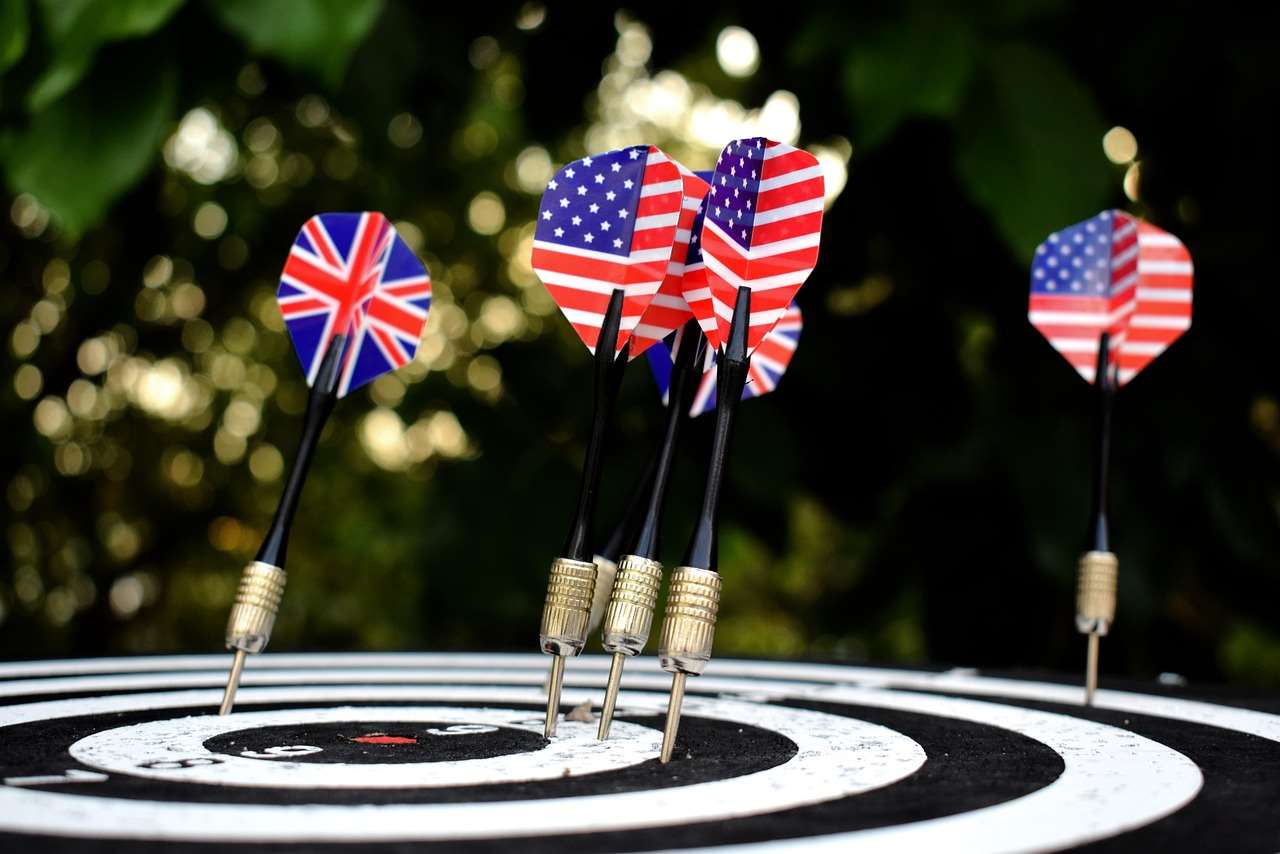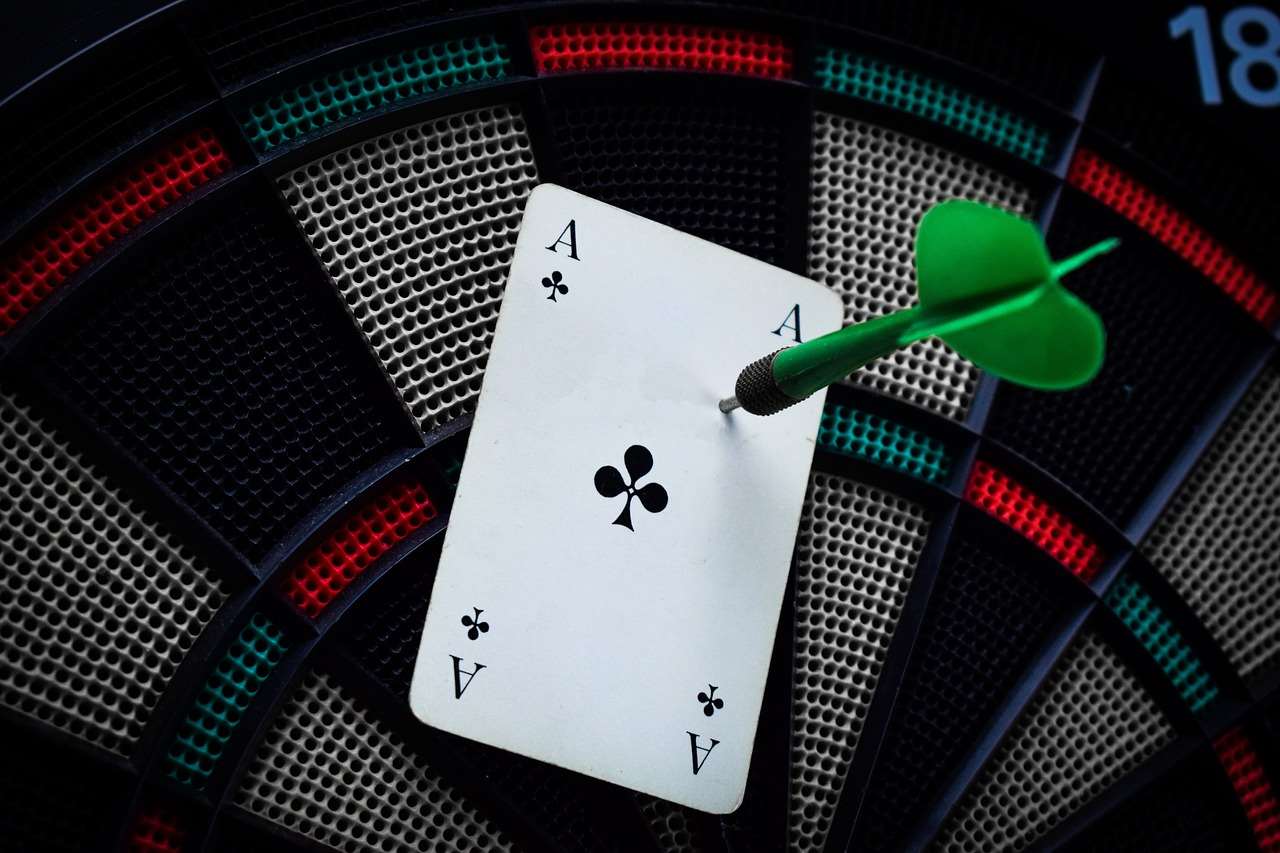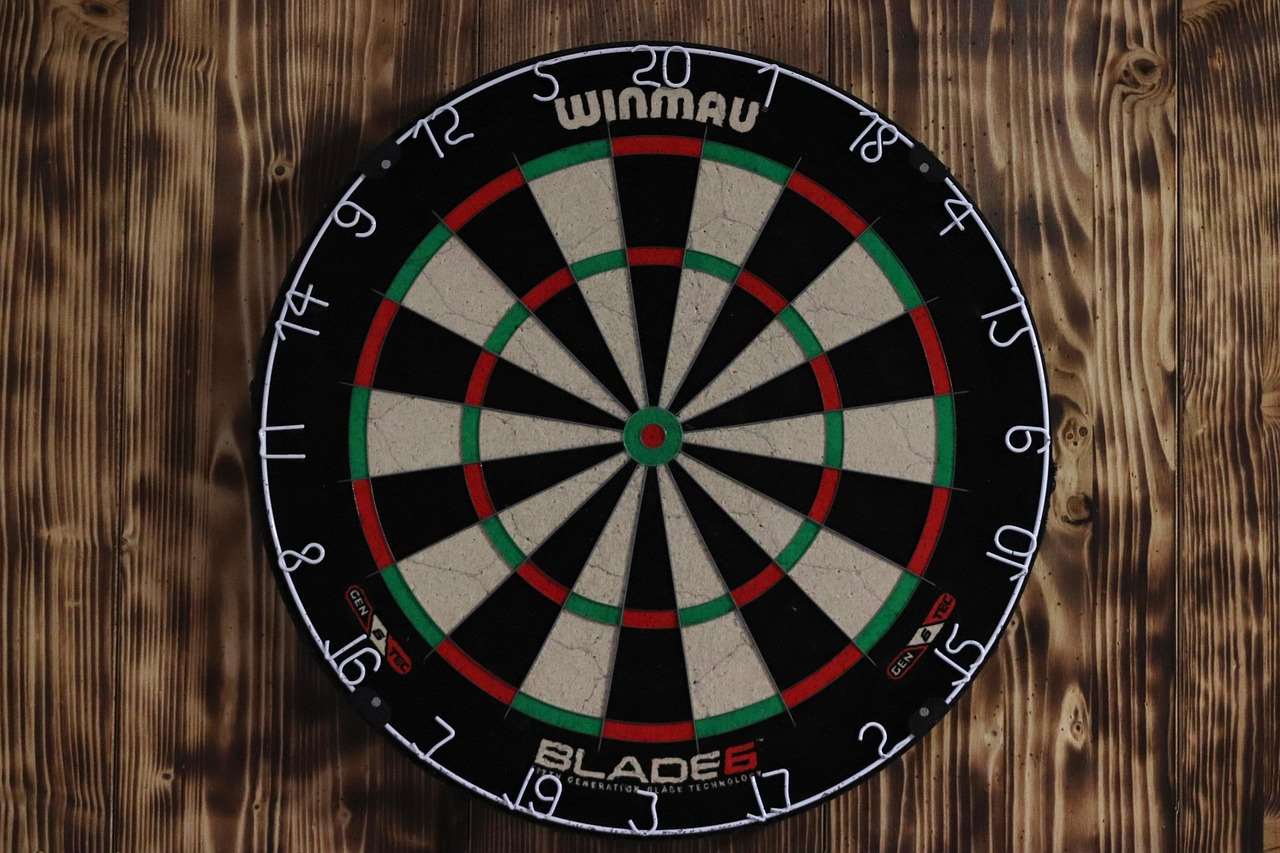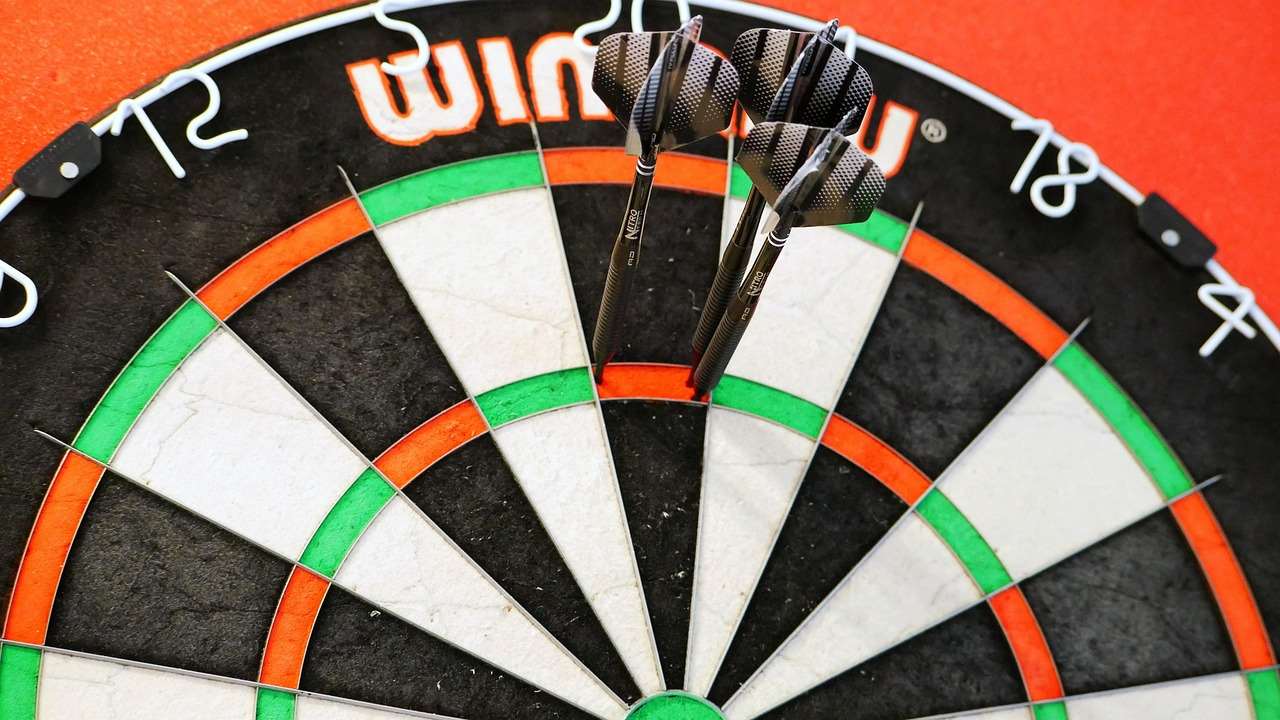Unlocking the secrets of darts twitch can significantly improve your game. This article will not only explain what causes this common issue but also provide actionable strategies to overcome it and enhance your performance. We’ll cover everything from the underlying mechanics to practical drills and mental techniques to help you maintain a steady hand and improve your accuracy.
⚠️ Still Using Pen & Paper (or a Chalkboard)?! ⚠️
Step into the future! The Dart Counter App handles all the scoring, suggests checkouts, and tracks your stats automatically. It's easier than you think!
Try the Smart Dart Counter App FREE!Ready for an upgrade? Click above!
Let’s start by understanding the nature of darts twitch. This involuntary muscle movement, often characterized by slight tremors or spasms in the arm or hand, can drastically impact your ability to hit your target consistently. It’s a common problem among darts players of all skill levels, from beginners to professionals, and understanding its causes is the first step to finding a solution. 
Many factors contribute to darts twitch. Stress and anxiety are significant culprits. The pressure of the game, particularly in competitive situations, can trigger muscle tension and lead to involuntary movements. Inadequate warm-up routines also play a role. Jumping straight into a game without properly preparing your muscles can leave you vulnerable to twitching. This is why proper preparation is so vital for consistent performance. Finally, physical fatigue can also worsen the issue. A tired body is more prone to these tremors. Remember, consistency is key in improving your game, and addressing darts twitch is a fundamental aspect of achieving that consistency.
Understanding and Overcoming Darts Twitch
Now that we understand the causes, let’s explore strategies to mitigate darts twitch. The most effective approach involves a multi-pronged strategy encompassing physical preparation, mental conditioning, and tactical adjustments. First, it’s crucial to establish a robust warm-up routine. This might involve simple stretches focusing on your arms, shoulders, and back, followed by practice throws to get your muscles accustomed to the throwing motion. A proper warm-up helps to increase blood flow and reduce muscle stiffness, preventing tremors. 
Mental Strategies for Steady Aim
Mental conditioning plays a pivotal role in controlling darts twitch. Stress and anxiety are the major culprits behind many involuntary movements. Techniques like deep breathing exercises and mindfulness meditation can help calm your nerves and reduce muscle tension. Visualisation is another useful tool; mentally rehearsing your throw before actually throwing can significantly improve focus and reduce the likelihood of twitching. Before each throw, take a moment to center yourself, focus on your breathing, and visualize a perfect throw landing exactly where you intended.
Furthermore, adopting a positive mindset is critical. Instead of focusing on potential mistakes or the pressure of the game, concentrate on your strengths and the positive aspects of your performance. Remember that even professional players experience moments of uncertainty; it’s part of the game. Embracing challenges with a positive attitude can help significantly reduce the occurrence of darts twitch.
Physical Techniques for Enhanced Control
Beyond mental strategies, perfecting your throwing technique can significantly reduce the risk of darts twitch. Maintaining a consistent grip, using the correct throwing motion, and ensuring a relaxed posture are all crucial elements. A tense grip exacerbates muscle tension and can directly contribute to twitching. Therefore, practice maintaining a relaxed yet firm grip throughout your throw. This can require significant practice and may need the guidance of an experienced darts coach. The goal is to find a balance between control and relaxation.
Consider exploring different grips and throwing styles to find what works best for you. What might work for one player could be completely ineffective for another. Experimentation is key to finding the most comfortable and effective style that minimizes stress and twitching. Learning how to maintain your posture properly also makes a difference, reducing strain on your muscles and enabling a more controlled throw. 
Equipment and its Impact on Darts Twitch
The equipment you use can also influence your susceptibility to darts twitch. Using darts that are too heavy or too light can cause muscle strain and increase the likelihood of tremors. Experiment with different weights and designs to find the most comfortable and stable option for you. Similarly, the type of dart flights you use can also play a subtle role. Dart flights fantail designs, for example, can impact flight stability. The shaft length and material can also affect how the dart feels in your hand; experimenting to find the best combination can vastly improve your stability and control.
Your dartboard itself can be a factor, although less directly than your darts and throwing style. A worn-out or improperly mounted dartboard can lead to unpredictable bounces and affect your confidence. Electronic scorer darts could provide less pressure if you find the pressure of a competitive game is contributing to your darts twitch.
Choosing the Right Darts
Selecting the right darts is a critical aspect of minimizing darts twitch. The weight, material, and design all contribute to the feel and control of your throw. Experimenting with different dart types helps you find one that suits your hand and throwing style. Too heavy a dart leads to fatigue and potential tremors, while a dart that’s too light might feel unstable and unpredictable. Remember, comfort and control are paramount, so don’t hesitate to experiment until you find the perfect fit for your needs. 
Environmental Factors
Environmental factors such as lighting, temperature, and noise levels in your playing environment can also subtly affect your performance and potentially trigger darts twitch. Adequate lighting ensures you can properly aim, while a comfortable temperature prevents muscle tension from cold or heat. Minimizing distractions such as loud noises or movement around you helps maintain focus and control, improving your game. Even the position of your dartboard can play a role – ensuring it’s properly mounted and at the correct height prevents unnecessary strain and potential twitching.
Advanced Techniques and Professional Advice
For persistent cases of darts twitch, seeking professional guidance can be extremely beneficial. A sports therapist or a physical therapist can provide targeted exercises and stretches designed to improve your posture, muscle flexibility, and reduce muscle tension. They can also help identify any underlying physical issues that may be contributing to your problem. A professional coach may help with your throwing technique, offering personalized tips on grip, posture, and stance. Double darts shop for example, may offer darts coaching services alongside their equipment.
Regular practice, coupled with consistent application of these strategies, is essential for long-term improvement. Don’t be discouraged if you don’t see immediate results; gradual progress is typical. Focus on consistency in your warm-up routine, mental exercises, and throwing technique. Remember to celebrate your successes along the way and use any setbacks as learning opportunities. 
Remember that even the most seasoned professionals occasionally experience darts twitch. It’s a common challenge that can be managed effectively with the right strategies and practice. By understanding the root causes and implementing the advice outlined in this article, you can significantly improve your game and enjoy a more consistent and rewarding darts experience. This includes using a Mobile dart scorer for a better experience. Considering a well-structured darts list could also be very beneficial for your training. For more advanced tactics, check out our article on darts finish chart and how many 180s in tonight’s darts.
Finally, don’t forget the fun aspect of the game! Enjoy the challenge, celebrate your progress, and remember that consistency comes with dedication and practice. Keep practicing, keep improving, and most importantly, keep enjoying the game.
Hi, I’m Dieter, and I created Dartcounter (Dartcounterapp.com). My motivation wasn’t being a darts expert – quite the opposite! When I first started playing, I loved the game but found keeping accurate scores and tracking stats difficult and distracting.
I figured I couldn’t be the only one struggling with this. So, I decided to build a solution: an easy-to-use application that everyone, no matter their experience level, could use to manage scoring effortlessly.
My goal for Dartcounter was simple: let the app handle the numbers – the scoring, the averages, the stats, even checkout suggestions – so players could focus purely on their throw and enjoying the game. It began as a way to solve my own beginner’s problem, and I’m thrilled it has grown into a helpful tool for the wider darts community.